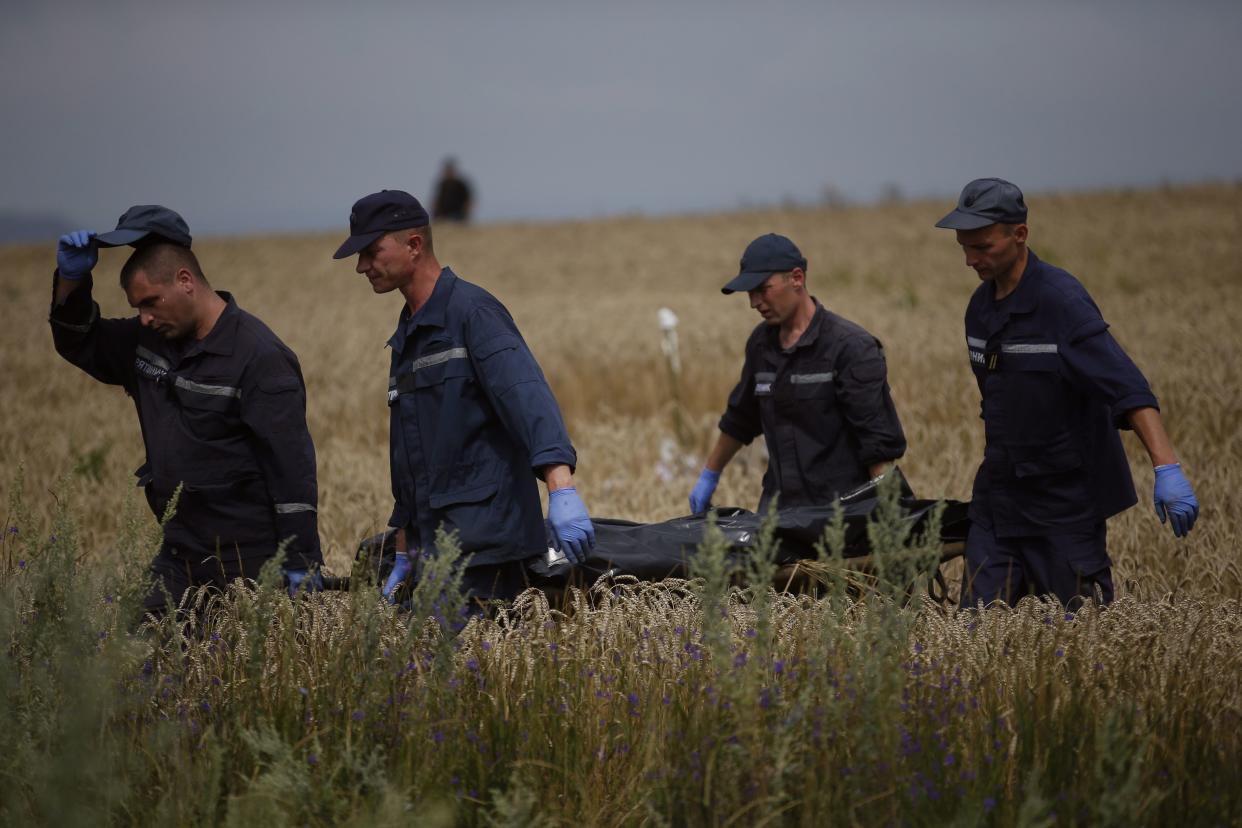Dutch expert says Ukraine body recovery team 'did a hell of a job'

By Peter Graff HRABOVE Ukraine (Reuters) - The Dutch head of a team sent to identify the victims of Malaysia Airlines flight MH17 praised the Ukrainian recovery workers who collected hundreds of bodies from a giant swathe of land in a war zone for doing a "hell of a job". Peter van Vliet, leader of a 3-man team of Dutch body identification experts, the first international investigators to visit the crash area, said his priority would be getting hundreds of bodies now stored in refrigerated rail cars to a location where they can be identified and sent home. Despite reports that some of the bodies may have been looted and were never properly secured during days lying out in summer sun, van Vliet expressed admiration for the recovery crews that gathered them. "I'm very impressed about the work that was done over here," he said after inspecting the main crash site, where bodies were still being found a day earlier pinned under chunks of aircraft wreckage. Citing the heat and the scale of the site, he said: "I think they did a hell of a job in a hell of a place." Asked how he felt as a Dutchman at a site where so many of his countrymen were killed, he said he had goosebumps despite the heat. Passengers from the Netherlands accounted for two-thirds of the 298 victims of Thursday's disaster. The Ukrainian government said 282 bodies and 87 fragments had now been found. At the site, the recovery operation appeared to have finished. Crews of recovery workers in blue suits that had been combing the countryside gathering bodies from fields of wheat and sunflowers were nowhere to be seen. EMPTY FIELDS All but one of their tents, a portable toilet, and their ambulances were gone. In the surrounding fields there was no sign of the teams of men in blue work suits who had been walking through the wheat and sunflowers looking for human remains. Pieces of the plane lay in the empty fields, in or near the places where they had fallen, although some had been moved to recover buried remains. An airplane seat, which days ago had a naked woman strapped in it now lay empty in the wheat. Van Vliet said in his view the recovery was not entirely complete, but he acknowledged that a full-scale international operation might never be possible in the conflict zone. "In my professional opinion it is not finished," he said. Asked what else would be needed, he said: "A forensic sweep of the entire area. But whether that's possible I don't know." Earlier, van Vliet visited refrigerated railway cars where the bodies have been collected and said he was happy with how they were being stored. The bodies are being kept in a train of five grey diesel-powered refrigerated cargo cars, parked behind a locomotive at the main platform of a dilapidated station in Torez, a small town about a 40-minute drive from the main crash site. When the doors were opened to allow van Vliet's team inside, heaps of black plastic body bags were visible. The stench was overpowering. Van Vliet and his two colleagues climbed inside with blue plastic gloves and surgical masks to investigate. Ukrainian officials hope the bodies can be brought by train to the eastern city of Kharkiv, out of the conflict zone, where international identification teams could examine them. Van Vliet said he had been promised that the train would be moved later on Monday but not told where it would be sent. He was due to meet rebel leaders later in the day, he said. He declined to give an estimate for how long it might take to identify and repatriate the remains. "My first priority is identifying the victims," he said. (Editing by Giles Elgood)


